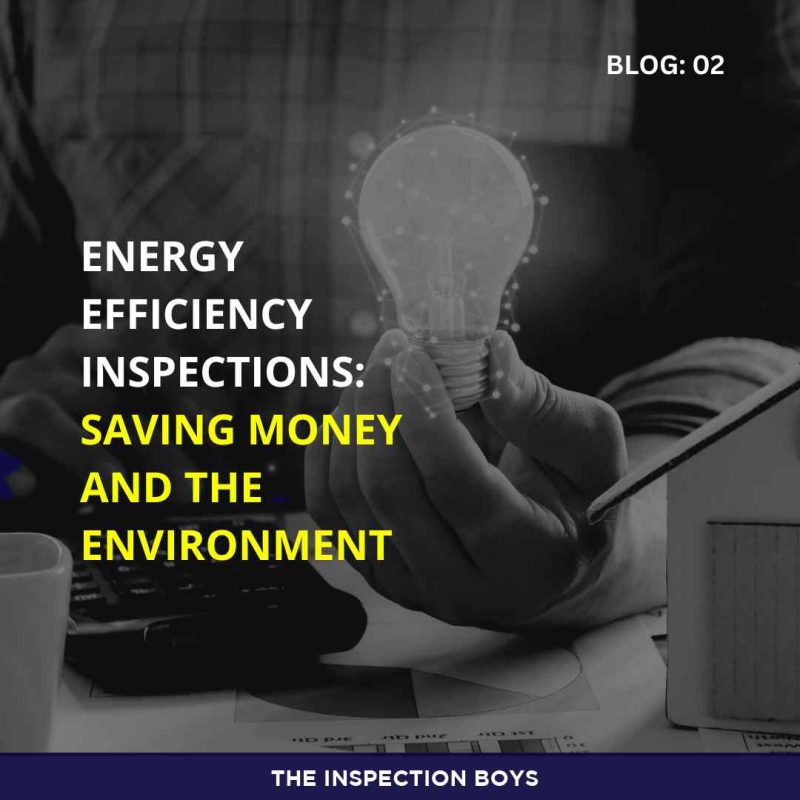Energy efficiency is a vital aspect of modern living, focusing on the prudent use of energy to achieve the same desired outcomes. This can be achieved through various measures, including improved insulation, efficient appliances, and smart thermostats. Energy efficiency inspections serve as valuable tools to identify areas where you can enhance the energy efficiency of your residential or commercial space, ultimately contributing to cost savings and environmental conservation.
The Benefits of Energy Efficiency
- Energy efficiency offers a multitude of advantages that extend beyond just financial savings. By optimizing energy usage, you can:
- Reduce Energy Costs: According to the U.S. Department of Energy, implementing energy efficiency improvements can lead to an average annual savings of approximately $200 for homeowners. These savings can significantly impact your budget over time.
- Environmental Impact: Enhancing energy efficiency plays a crucial role in reducing greenhouse gas emissions, thereby helping combat climate change. In fact, energy efficiency improvements can reduce emissions by up to 10%, making it a substantial contributor to a sustainable future.
- Enhanced Comfort: Energy-efficient measures often result in improved comfort within your living or working spaces. Better insulation, efficient heating and cooling systems, and well-sealed buildings can create a more pleasant and consistent indoor environment.
Understanding Energy Efficiency Inspections
An energy efficiency inspection is a comprehensive evaluation of your home or business’s energy consumption. During this assessment, an experienced inspector examines various aspects, including heating, cooling, water heating, lighting, appliances, insulation, and air sealing. The inspector then compiles a detailed report that identifies areas where you can enhance your energy efficiency.
The Cost of Energy Efficiency Inspections
The cost of an energy efficiency inspection varies depending on the size and complexity of your property. While it might represent an initial investment, the potential savings on your energy bills typically offset this expense over time. Consider it a long-term investment in both your financial future and the environment.
Preparing for an Energy Efficiency Inspection
If you’re considering an energy efficiency inspection, there are several steps to prepare:
Gather Information: Collect essential information about your home or business, including square footage, age of the building, and details about your heating and cooling system.
List Existing Measures: Make a record of any energy efficiency measures you’ve already implemented, such as insulation upgrades or the use of energy-efficient appliances.
Selecting an Inspector
Choosing the right energy efficiency inspector is crucial. When searching for inspectors in your area, consider the following:
- Experience: Inquire about the inspector’s experience and expertise in energy efficiency assessments.
- Qualifications: Check the inspector’s qualifications and certifications in the field of energy efficiency.
- Rates: Ask about their inspection rates and any additional costs involved in the process.
- References: Request references from previous clients to gain insights into their performance and customer satisfaction.
The Inspection Process
Once you’ve selected an inspector, they will schedule a visit to your property. The inspection typically takes a few hours and involves the use of specialized tools such as a blower door, thermal camera, and light meter to assess your energy usage.
Post-Inspection Recommendations
After the inspection, you’ll receive a comprehensive report that highlights areas where you can enhance your energy efficiency. This report will also provide specific recommendations for measures you can take to achieve these improvements.
Additional Tips for Energy Savings
Beyond energy efficiency inspections, here are some additional tips to help you save energy in your home or business:
- Weatherization: Caulk and seal air leaks around windows and doors, and add insulation to attics and walls to minimize heat loss.
- Energy-Efficient Appliances: Choose appliances with the ENERGY STAR label, indicating high energy efficiency standards.
- Lighting Upgrades: Replace traditional incandescent bulbs with energy-efficient alternatives like CFLs or LEDs.
- Natural Light: Utilize natural daylight by opening curtains and blinds during the day, reducing the need for artificial lighting.
- Unplug Electronics: Even when turned off, electronic devices can consume power. Unplug them when not in use or use smart power strips.
- Thermostat Settings: Adjust your thermostat to a higher temperature in the summer and a lower temperature in the winter to optimize heating and cooling.
- Water Conservation: Take shorter showers, wash full loads of laundry, and run the dishwasher only when it’s full to save water and energy.
Key Takeaway
By incorporating these energy-saving practices alongside an energy efficiency inspection, you can make significant strides in reducing both your energy expenses and your environmental footprint.

